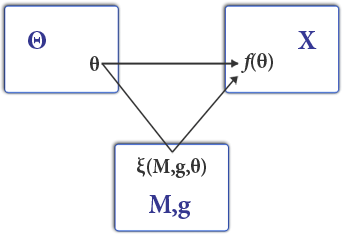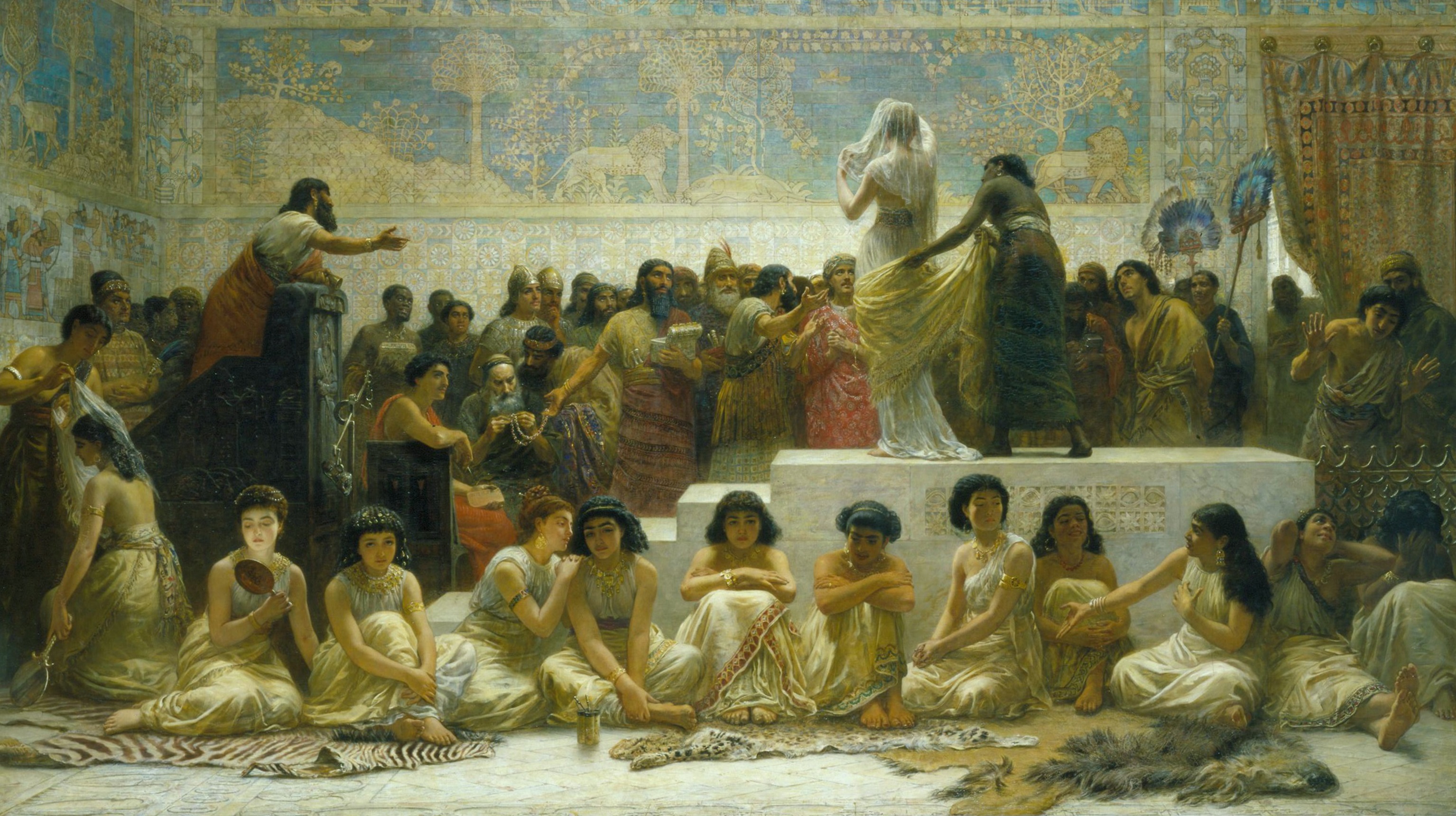|
Single-parameter Utility
In mechanism design, an agent is said to have single-parameter utility if his valuation of the possible outcomes can be represented by a single number. For example, in an auction for a single item, the utilities of all agents are single-parametric, since they can be represented by their monetary evaluation of the item. In contrast, in a combinatorial auction for two or more related items, the utilities are usually not single-parametric, since they are usually represented by their evaluations to all possible bundles of items. Notation There is a set X of possible outcomes. There are n agents which have different valuations for each outcome. In general, each agent can assign a different and unrelated value to every outcome in X. In the special case of single-parameter utility, each agent i has a publicly known outcome proper subset W_i \subset X which are the "winning outcomes" for agent i (e.g., in a single-item auction, W_i contains the outcome in which agent i wins the item). ... [...More Info...] [...Related Items...] OR: [Wikipedia] [Google] [Baidu] |
Mechanism Design
Mechanism design (sometimes implementation theory or institution design) is a branch of economics and game theory. It studies how to construct rules—called Game form, mechanisms or institutions—that produce good outcomes according to Social welfare function, some predefined metric, even when the designer does not know the players' true preferences or what information they have. Mechanism design thus focuses on the study of solution concepts for a class of private-information games. Mechanism design has broad applications, including traditional domains of economics such as market design, but also political science (through voting theory). It is a foundational component in the operation of the internet, being used in networked systems (such as inter-domain routing), e-commerce, and Sponsored search auction, advertisement auctions by Facebook and Google. Because it starts with the end of the game (a particular result), then works backwards to find a game that implements it, it ... [...More Info...] [...Related Items...] OR: [Wikipedia] [Google] [Baidu] |
Auction
An auction is usually a process of Trade, buying and selling Good (economics), goods or Service (economics), services by offering them up for Bidding, bids, taking bids, and then selling the item to the highest bidder or buying the item from the lowest bidder. Some exceptions to this definition exist and are described in the section about different #Types, types. The branch of economic theory dealing with auction types and participants' behavior in auctions is called auction theory. The open ascending price auction is arguably the most common form of auction and has been used throughout history. Participants bid openly against one another, with each subsequent bid being higher than the previous bid. An auctioneer may announce prices, while bidders submit bids vocally or electronically. Auctions are applied for trade in diverse #Contexts, contexts. These contexts include antiques, Art auction, paintings, rare collectibles, expensive wine auction, wines, commodity, commodities, l ... [...More Info...] [...Related Items...] OR: [Wikipedia] [Google] [Baidu] |
Combinatorial Auction
A combinatorial auction is a type of smart market in which participants can place bids on combinations of discrete heterogeneous items, or “packages”, rather than individual items or continuous quantities. These packages can be also called lots and the whole auction a multi-lot auction. Combinatorial auctions are applicable when bidders have non-additive valuations on bundles of items, that is, they value combinations of items more or less than the sum of the valuations of individual elements of the combination. Simple combinatorial auctions have been used for many years in estate auctions, where a common procedure is to accept bids for packages of items. They have been used recently for truckload transportation, bus routes, industrial procurement, and in the allocation of radio spectrum for wireless communications. In recent years, procurement teams have applied reverse combinatorial auctions in the procurement of goods and services. This application is often referred to as ... [...More Info...] [...Related Items...] OR: [Wikipedia] [Google] [Baidu] |
Subset
In mathematics, a Set (mathematics), set ''A'' is a subset of a set ''B'' if all Element (mathematics), elements of ''A'' are also elements of ''B''; ''B'' is then a superset of ''A''. It is possible for ''A'' and ''B'' to be equal; if they are unequal, then ''A'' is a proper subset of ''B''. The relationship of one set being a subset of another is called inclusion (or sometimes containment). ''A'' is a subset of ''B'' may also be expressed as ''B'' includes (or contains) ''A'' or ''A'' is included (or contained) in ''B''. A ''k''-subset is a subset with ''k'' elements. When quantified, A \subseteq B is represented as \forall x \left(x \in A \Rightarrow x \in B\right). One can prove the statement A \subseteq B by applying a proof technique known as the element argument:Let sets ''A'' and ''B'' be given. To prove that A \subseteq B, # suppose that ''a'' is a particular but arbitrarily chosen element of A # show that ''a'' is an element of ''B''. The validity of this technique ... [...More Info...] [...Related Items...] OR: [Wikipedia] [Google] [Baidu] |
Social Choice
Social choice theory is a branch of welfare economics that extends the theory of rational choice to collective decision-making. Social choice studies the behavior of different mathematical procedures ( social welfare functions) used to combine individual preferences into a coherent whole.Amartya Sen (2008). "Social Choice". ''The New Palgrave Dictionary of Economics'', 2nd EditionAbstract & TOC./ref> It contrasts with political science in that it is a normative field that studies how a society can make good decisions, whereas political science is a descriptive field that observes how societies actually do make decisions. While social choice began as a branch of economics and decision theory, it has since received substantial contributions from mathematics, philosophy, political science, and game theory. Real-world examples of social choice rules include constitutions and parliamentary procedures for voting on laws, as well as electoral systems; as such, the field is occasionall ... [...More Info...] [...Related Items...] OR: [Wikipedia] [Google] [Baidu] |
Monotonicity (mechanism Design)
In mechanism design, monotonicity is a property of a social choice function. It is a necessary condition for being able to implement such a function using a strategyproof mechanism. Its verbal description is: In other words: Notation There is a set X of possible outcomes. There are n agents which have different valuations for each outcome. The valuation of agent i is represented as a function:v_i : X \longrightarrow R_+which expresses the value it assigns to each alternative. The vector of all value-functions is denoted by v. For every agent i, the vector of all value-functions of the ''other'' agents is denoted by v_. So v \equiv (v_i,v_). A social choice function is a function that takes as input the value-vector v and returns an outcome x\in X. It is denoted by \text(v) or \text(v_i,v_). In mechanisms without money A social choice function satisfies the strong monotonicity property (SMON) if for every agent i and every v_i,v_i',v_, if:x = \text(v_i, v_)x' = \text(v' ... [...More Info...] [...Related Items...] OR: [Wikipedia] [Google] [Baidu] |
Second-price Auction
A Vickrey auction or sealed-bid second-price auction (SBSPA) is a type of sealed-bid auction. Bidders submit written bids without knowing the bid of the other people in the auction. The highest bidder wins but the price paid is the second-highest bid. This type of auction is strategically similar to an English auction and gives bidders an incentive to bid their true value. The auction was first described academically by Columbia University professor William Vickrey in 1961 though it had been used by stamp collectors since 1893. In 1797 Johann Wolfgang von Goethe sold a manuscript using a sealed-bid, second-price auction. Vickrey's original paper mainly considered auctions where only a single, indivisible good is being sold. The terms ''Vickrey auction'' and ''second-price sealed-bid auction'' are, in this case only, equivalent and used interchangeably. In the case of multiple identical goods, the bidders submit inverse demand curves and pay the opportunity cost. Vickrey auctions ... [...More Info...] [...Related Items...] OR: [Wikipedia] [Google] [Baidu] |
Truthful Mechanism
In mechanism design, a strategyproof (SP) mechanism is a game form in which each player has a weakly- dominant strategy, so that no player can gain by "spying" over the other players to know what they are going to play. When the players have private information (e.g. their type or their value to some item), and the strategy space of each player consists of the possible information values (e.g. possible types or values), a truthful mechanism is a game in which revealing the true information is a weakly-dominant strategy for each player. An SP mechanism is also called dominant-strategy-incentive-compatible (DSIC), to distinguish it from other kinds of incentive compatibility. A SP mechanism is immune to manipulations by individual players (but not by coalitions). In contrast, in a group strategyproof mechanism, no group of people can collude to misreport their preferences in a way that makes every member better off. In a strong group strategyproof mechanism, no group of people can c ... [...More Info...] [...Related Items...] OR: [Wikipedia] [Google] [Baidu] |
Expected Value
In probability theory, the expected value (also called expectation, expectancy, expectation operator, mathematical expectation, mean, expectation value, or first Moment (mathematics), moment) is a generalization of the weighted average. Informally, the expected value is the arithmetic mean, mean of the possible values a random variable can take, weighted by the probability of those outcomes. Since it is obtained through arithmetic, the expected value sometimes may not even be included in the sample data set; it is not the value you would expect to get in reality. The expected value of a random variable with a finite number of outcomes is a weighted average of all possible outcomes. In the case of a continuum of possible outcomes, the expectation is defined by Integral, integration. In the axiomatic foundation for probability provided by measure theory, the expectation is given by Lebesgue integration. The expected value of a random variable is often denoted by , , or , with a ... [...More Info...] [...Related Items...] OR: [Wikipedia] [Google] [Baidu] |
Single Peaked Preferences
Single-peaked preferences are a class of preference relations. A group has single-peaked preferences over a set of outcomes if the outcomes can be ordered along a line such that: # Each agent has a "best outcome" in the set, and # For each agent, outcomes that are further from his or her best outcome are preferred less. Single-peaked preferences are typical of one-dimensional domains. A typical example is when several consumers have to decide on the amount of Public good (economics), public good to purchase. The amount is a one-dimensional variable. Usually, each consumer decides on a certain quantity which is best for him or her, and if the actual quantity is more/less than that ideal quantity, the agent is then less satisfied. With single-peaked preferences, there is a simple truthful mechanism for selecting an outcome, which is to select the median quantity; this results in the median voter theorem. It is truthful because the median function satisfies the Monotonicity (mechani ... [...More Info...] [...Related Items...] OR: [Wikipedia] [Google] [Baidu] |


